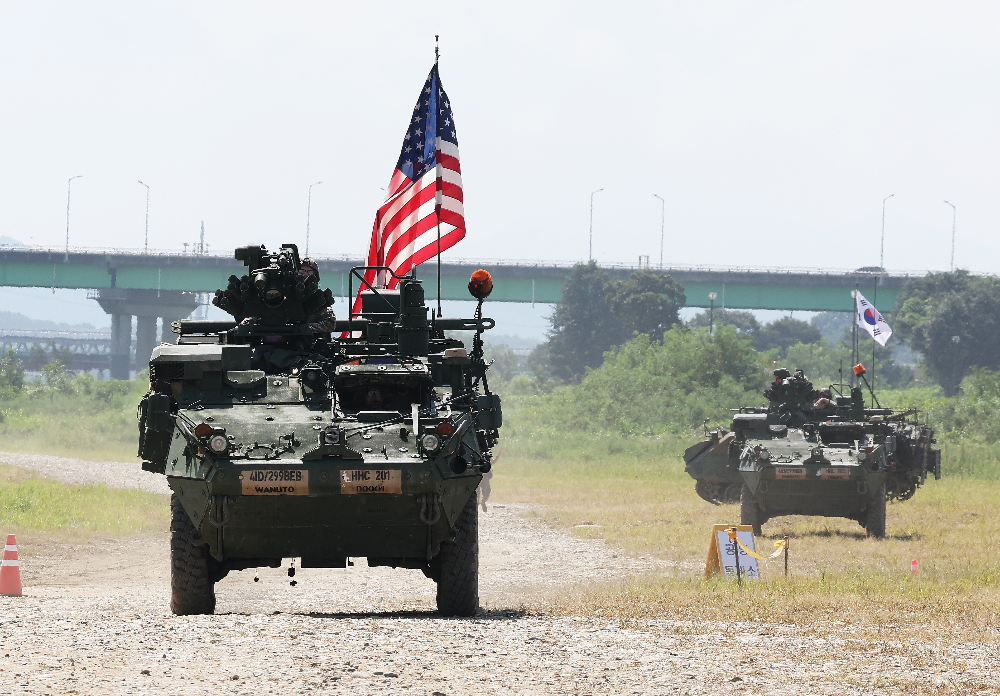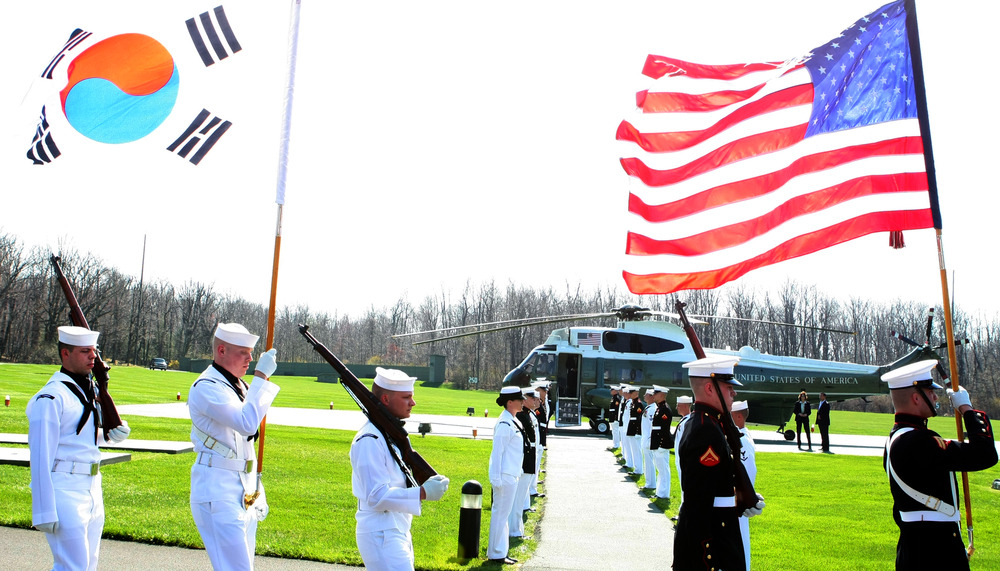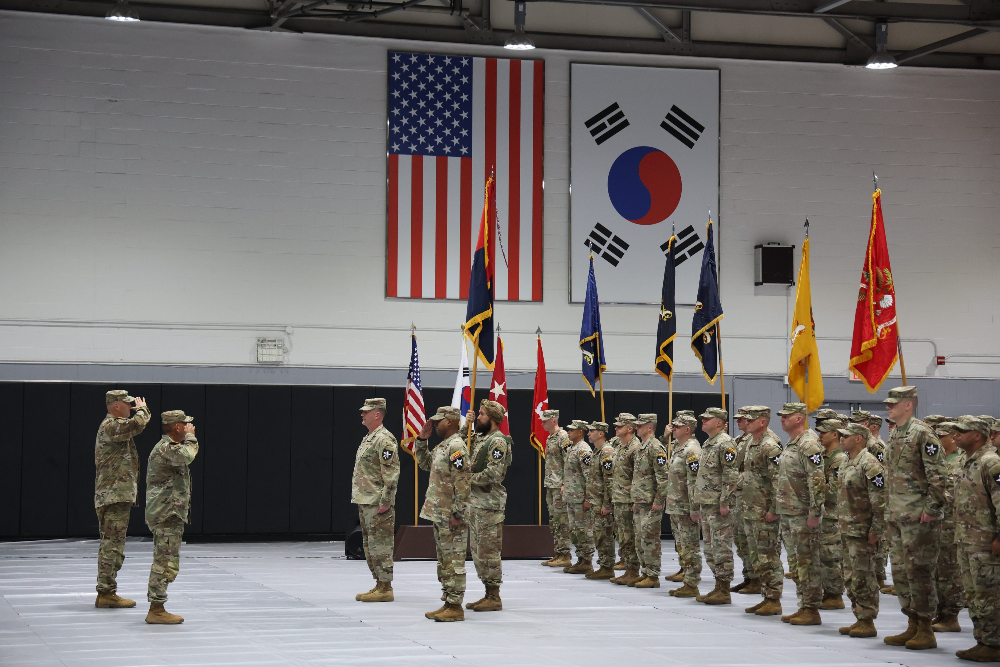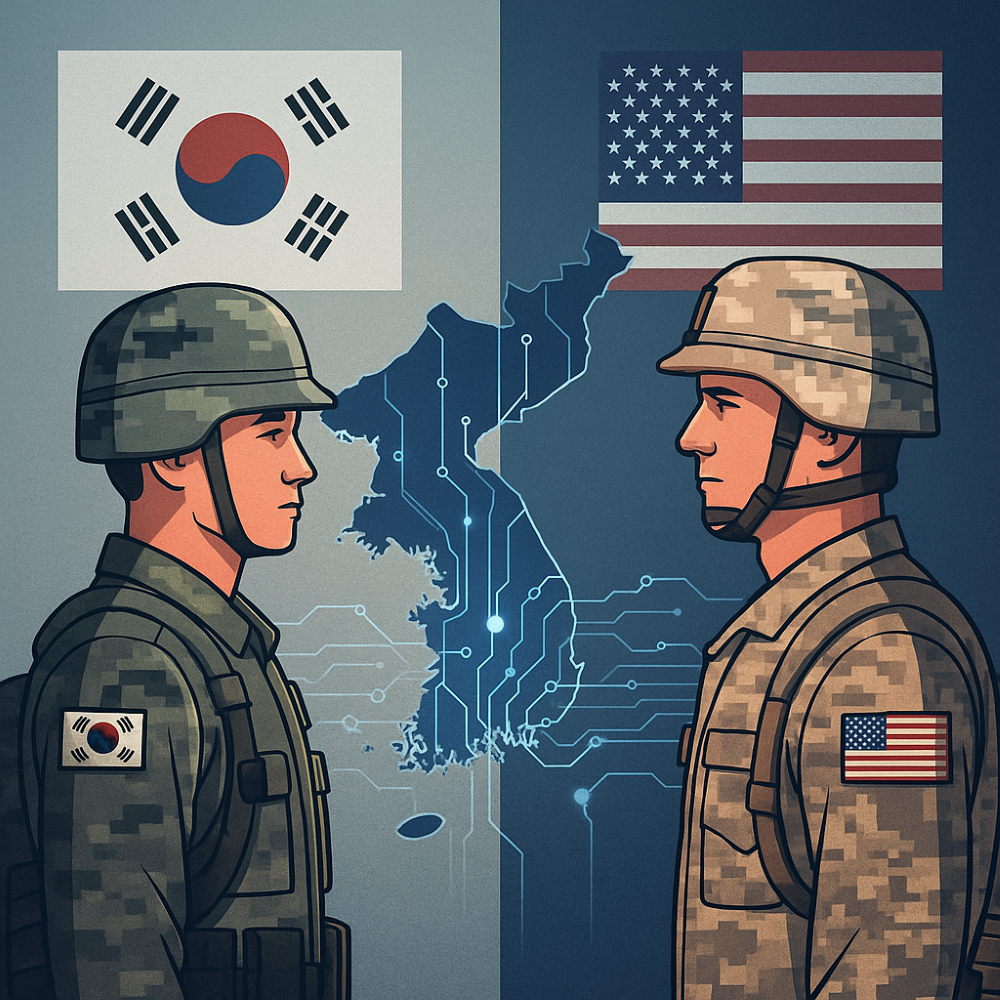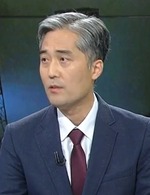
- #Security & Defense
- #South Korea
- #US Foreign Policy
- #US-ROK Alliance
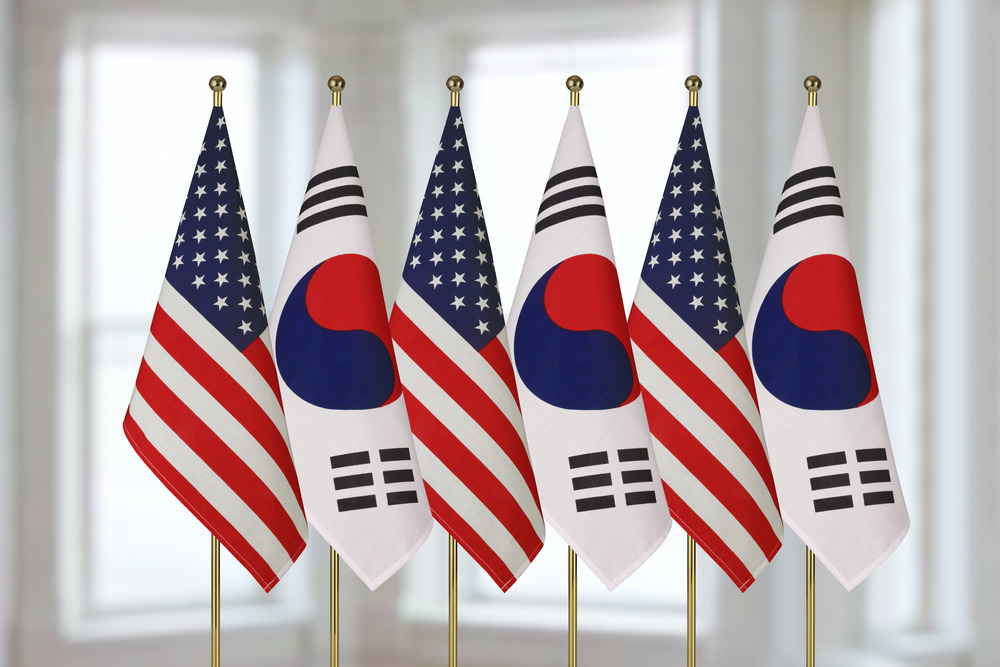
Key Takeaways:
- Uncertainty is growing due to simultaneous changes in both order and behavior, leading to alliance restructuring
- The two discourses, alliance modernization by the U.S. and future alliance by South Korea, are at play on the ROK-U.S.
alliance, and in doing so, these two should be converged rather than unharmonized in an effort to make the alliance remain
cohesive- The ROK-U.S. alliance needs to pursue a more consolidated symmetric alliance as the optimal remedy for their strategic
alliance cohesion, while putting more emphasis on balance of responsibility and balance of roles
Introduction: Growing uncertainty of both order and behavior
Can alliances continue to serve as linchpins for security amid growing uncertainty? Alliances are hard to form, but their survival is harder. Faltering alliances around the world show that even longstanding institutionalized alliances could be deadlocked or at risk of their survival. The typical example is NATO (North Atlantic Treaty Organization), which does not look as robust as before, although it has maintained 76 years since its launch in 1949.
What makes alliances weaker and in danger around the world in unexpected ways? The massive scale of alliance shock is driven by the converging mechanisms of changes in both structure and agency. First, a structural change serves as an inherent driver for a faltering security around the world, followed by a change in alliance posture. Since the structural changes are huge, it is hard to fully explain what is going on by conventional theories of International Relations. The realist lens of the jungle is not fully explanatory because it stays away from order, as opposed to the realist argument that the jungle is defined as a workable order. The liberal lens of the garden is much less explanatory in the sense that offensive mechanisms are growing internationally and international rules are being deadlocked. In this regard, the mechanism of the New Cold War is paid more attention to in an effort to figure out what is really happening in the world. What matters more is that structure is not the only variable to make alliances falter.
Second, a variable of agency serves as the second driver to make the previously working international formula, including alliance mechanisms, less functional and more chaotic. Meanwhile, what makes it noteworthy in terms of a variable of agency is that the U.S. is at the center of significant behavioral changes under the second Trump administration. Why does a single country’s behavioral change have a big impact on alliance mechanisms in the world? The reason behind these massive impacts is that the U.S. has served over the last seven decades as a superpower and a hegemon. To put it simply, the U.S. has maintained a global scale impact due to its unique status in the world. Furthermore, the U.S. is ranked as a top country regarding the number of allied countries. The U.S. is armed with more than 50 allies in the world. This unique allied posture compels behavioral changes of the U.S. to be vulnerable to alliance mechanisms across the board and around the world. To top it off, states with destructive behavioral changes have a tendency to expand to non-great powers like Russia, North Korea, and Israel.
The change of alliance formula is the outcome of security environmental changes and states’ behavioral changes. To put it another way, this destructive change is not caused by one of the two drivers but by the converging mechanism of structural and behavioral changes. In this vein, this chaotic mechanism is most likely to take place much longer than expected. Structure is hard to change through strategic efforts such as policy developments. However, agency, the second variable, is more malleable for driving innovative changes while staying away from destructive ones. Moreover, the variable agency serves as a chance to come up with optimal remedies. In this vein, how the Trump administration intends to make those changes needs to be analyzed in an effort to make the alliance mechanism less faltering and more functional.
The Trump administration’s security policies
The reason why it is tricky to analyze the Trump administration’s security policies is that its national-level documents, such as NSS (National Security Strategy), have not been laid out yet. Thus, the Trump administration’s strategic chaos continues even after 200 days in its launch. More importantly, this strategic chaos is unlikely to disappear even after the publication of national documents on foreign strategy because there are differences of policy priority between Trump himself and his staff. U.S. President Trump still pays tremendous attention to trade wars, such as tariff negotiations, but his cabinet members, such as Secretary of War Pete Hegseth, put more emphasis on Indo-Pacific, which is more often called Asia-Pacific, particularly by Under Secretary Elbridge Colby.
These differences drive his staff, not Trump, to seize the initiative of security policies, particularly defense policies. With this in mind, the U.S.’s security policies are characterized by the following items. First, the new alliance formula is being designed primarily by Trump’s staff, not himself. President Trump is reluctant to differentiate between allies and adversaries due to his emphasis on economic deals. Meanwhile, the defense and military authority seize the initiative of policies on how to manage alliances around the world. Second, the Indo-Pacific goes back to a geopolitical gravity. In this vein, the alliance formula is not simply changed but differentiated depending on who the allies are. While staying away from NATO allies, the Trump administration feels more attached to the Indo-Pacific allies because the U.S. needs their help to achieve MAGA (Make America Great Again) objectives in the region. Meanwhile, the Trump administration attempts to treat allies differently depending on their willingness to join the U.S.’s key task in the region, which is aimed at countering China. Third, offensive realism is at the forefront under the policy of peace through strength. In June 2025, the U.S. sent strategic bombers to strike Iranian nuclear facilities, and in September, it ambitiously changed the Department of Defense to the Department of War. Those cases show how the U.S. is being more offensive-oriented under the Trump administration. The aforementioned three characteristics spur the discourse of alliance modernization to be at the forefront in terms of the U.S.’s alliance restructuring.
The ROK-U.S. alliance: Similar discourses but different glasses
Both South Korea and the U.S. pursue alliance evolution, but its outlook remains less clarified, and in doing so, it could become unharmonious if an effort to refine this status is not made in a timely manner. In fact, as the U.S. stresses alliance modernization, South Korea lays out a futuristic, comprehensive strategic alliance. Thus, the center of gravity should be on how to converge these different-looking discourses toward the same win-win goal.
To that end, the alliance modernization formula needs to be analyzed in a more polished way. As shown by Table 1, this formula is composed of the key three items: 1) Cost, 2) Mission, and 3) Role. First, the Trump administration demands that its allies increase their military expenditure significantly while denouncing their free-riding attitudes. The Trump administration pressed NATO states to increase their burden from the beginning of its launch. As a result, NATO allies promised to increase their defense spending to 5 percent of GDP at the 2025 Hague NATO summit. Second, the U.S. is assertive in bringing its defense policy priority to seizing the initiative of great power politics with China, and in doing so, the U.S. military missions are oriented to countering the Chinese military. Meanwhile, the U.S. demands that its allies should be more responsible for their own national security by enhancing their self-help capabilities. Third, the Trump administration asks its allies to expand their roles in the Indo-Pacific and help the U.S. actively. For instance, Under Secretary Colby asked Japan and Australia what they could do to help the U.S. in the Taiwan contingency.
The new formula is directly connected to the ROK-U.S. alliance modernization. First, in terms of cost, South Korea promised to increase its defense spending in the ROK-U.S. summit, which was held at the White House in August 2025. In addition, President Trump made remarks on his interest in the ownership of land in an American base in South Korea. These remarks seem to step up its leverage over South Korea regarding additional SMA (Special Measures Agreement) negotiations. Second, the item of mission is related to the strategic flexibility of USFK (United States Forces Korea). Third, when it comes to South Korea’s roles in the region, the Trump administration has not raised this issue officially yet. However, this issue could be on the rise at any time.
In the meantime, South Korea is more interested in upgrading its status and prestige in the combined defense architecture. Similarly, the ROK administration has included the transfer of OPCON (Operational Control) in one of its 123 top policies. Furthermore, South Korea wants a status quo regarding the USFK posture on the Korean Peninsula. In this sense, the two discourses, alliance modernization and future alliance, remain unharmonized, leading to the feasibility of a less cohesive alliance. To put it differently, this means that if these two discourses are converged and harmonized, the ROK-U.S. alliance is expected to be much more cohesive.
Table 1: The Alliance Modernization Formula
The New Alliance Formula |
||
Cost |
Mission |
Role |
More military expenditure |
Flexibility of overseas troops |
Demand allies’ role overseas |
Conclusion: Symmetrical alliance as a remedy for the longstanding cohesive alliance
With the above analyses in mind, the following remedies are worth a try to make the ROK-U.S. alliance cohesive and ironclad. First, South Korea needs to develop a multilayered diplomatic and security strategy beyond the two-axis strategy based on self and alliance. The redesigned strategy is composed of four points: 1) self-help, 2) alliance, 3) security partnership, and 4) international solidarity. The redesigned strategy with diversification would help South Korea grapple with any contingencies. Second, South Korea should put more emphasis on developing win-win items so that it will be able to increase its leverage over the U.S. In this regard, the MASGA (Make American Ship Great Again) project serves as an effective tool for win-win outcomes. Similarly, cooperation on nuclear energy between South Korea and the U.S. is attracting attention. These items should continue to be developed for a reciprocal alliance. Third, South Korea should not hesitate to bring strategic flexibility to the table in a situation where it has been gradually applying it on the field. Seoul needs to be more malleable on the 2006 agreement of strategic flexibility. Accordingly, South Korea might proactively come up with strategic flexibility 2.0 just so that it can increase its leverage over the U.S., just in case of the actual rise of this issue on the table.
All of the above items boil down to the outlook of symmetric alliance, which is applicable to both the discourse of alliance modernization and the discourse of the future alliance. Unlike the alliance's inception in 1953, South Korea has become a robust and strong power in the world. Under the posture of symmetric alliance, a balance of responsibility as well as balance of roles need to be established in this valuable ROK-U.S. alliance.

BAN Kil Joo is an assistant professor and director of the Center for Geo-political Studies at the Korea National Diplomatic Academy. He holds a Ph.D. in Political Science from Arizona State University. He worked as the project manager of the International Organizations Center at IIRI, Korea University. He also worked as the Director of the Center for Security Studies, ICIS, Inha University. In a government experience, he served as an Assistant Secretary to the ROK President for foreign affairs. His research areas are the U.S.-China competition, alliance, Indo-Pacific security, North Korea’s nuclear program, and diplomatic strategy. Recently, in 2020-2025 alone, he has written 63 academic papers, including 7 SSCI-indexed, 7 SCOPUS-indexed, and 49 KCI-indexed ones.
